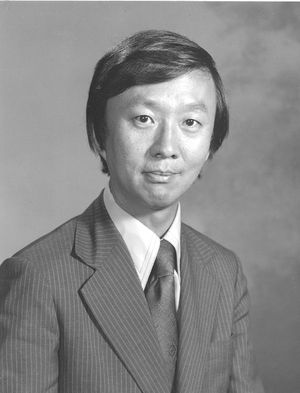What if I told you that the internet and telephone, which are the lifeline essentials of our today's modern world, would cease to exist in the absence of a single man, hailing all the way from Punjab, in India. Most probably you are not aware of this revolutionary idea AND the revolutionary man, who, with his brilliant mind filled with curiosity and innovation, discovered one of the most crucial ways to transfer data at lightning speed. He is Narinder Singh Kapany. The "Unknown" Father of "Fiber Optics".
About N.S Kapany
Born in a Sikh family in Moga, Punjab, Kapany showed significant practical interest in science from an early age. After being rebuked by his teacher for asking the underlying reason for the statement "Light travels in a straight line", young Kapany became adamant about his ultimate goal of bending light and therefore proving his seniors wrong. After completing his early schooling in Dehradun, in the foothills of the Himalayas, he went on to complete his graduation from Agra University.
Interestingly, he served as an Indian Ordnance Factory Service Officer, based on his belief that it would give him an idea about optical instruments, their mechanism, or optics since the ordnance factory dealt in the mass production of optical instruments like binoculars, etc. for the Indian Army.
Kapany, without a doubt, preferred England for higher education over any other country, due to their massive advancements in the fields of telecommunication and artificial intelligence(Bombe, which decoded the German "Unbeatable" Enigma in roughly,20 minutes). Seeing, so many opportunities waiting to be knocked, without further delay, he got admitted to Imperial College London in 1952, to enhance his research on the world of Fiber Optics. In 1955, he successfully managed to get a Ph.D. from the University of London in optics.
The Discoveries To Follow
While researching optics in the early '50s, Kapany acquainted with the British Inventor, Harold Hopkins. Hopkins was known for his pioneering contributions to the theory of Aberration, which is basically the spreading of light over a region of space rather than being concentrated on a single point. The image produced due to this effect will be blurred, its intensity varying to the type of aberration.
Till the early '50s, endoscopes used by medical faculty for surgeries and check-ups were based on the concept of Aberration. But this resulted in the lack of accuracy and blurring of images, and also, due to the lack of flexibility of the instrument, the doctors couldn't investigate deeper inside our bodies.
Kapany sought a solution. He took the advantage of the phenomenon of "Total Internal Reflection".
When light travels from a denser to a lighter medium, it gets refracted(bent), but at a certain critical angle, the refracted light touches the same medium(dense) again. Here the refracted light makes an angle of 90 degrees with the normal. After this critical value, the refracted light is sent back to the same medium.
So, Kapany tried the same thing with fiber, which is insulated with a layer(cladding) with a low refractive index, to reduce the density and cause the difference to allow total internal reflection of the light. The cladding also ensures that there is minimum or no leakage in the transfer of data.
After this, he proceeded to modify his model even further. Kapany suggested that just like in cameras, higher pixels provide a higher resolution, so it is in the case of fiber optics. This time, instead of a single large cable, he used myriad "miniature" fibers, which will not only increase the resolution of the image produced by fiber optics but also undoubtedly provide flexibility.
The Betrayal
Right after the success of Kapany's new fiber optics, a war broke out between the inventors. This was just the first betrayal life had to offer to the Indian physicist who once pledged to bend the light. While Hopkins and Kapany were fighting their cold war, a new individual stole away the attention of the spectators. It's Charles Kuen Kao.
Though entering the field quite late in comparison to Kapany and Hopkins, Charles went on to publish several research papers on fiber optics. He also found a way to combine glass fibers and lasers to allow the transfer of digital data. He also enquired about the impurities present in the glass fibers and stated that high purity must be ensured for the smooth and lightning-fast transfer of digital data.
Controversially, Charles Kuen Kao won the noble prize in telecommunication for his research in fiber optics. Though, the pioneering study was conducted by none other than our N.S Kapany.
Why Fiber Optics?
Why will we adopt this technology? Here are some points that we might want to consider-
- They are cheaper
- Higher carrying capacity - since we can add more thin fibers instead of the primitive single copper wire.
- Less signal break-up - the fiber optics does not lose much of its signal, like the previous copper wire, which would allow leakage at some level. They give customers a better resolution or a call.
- Low power requirements - since lesser light energy is wasted, power requirements are minimized.
- Non-flammable - Unlike copper wires, fiber optics carry no electricity, therefore removing the danger of electrical fires.
- Flexibility - The thin, wire-like fibers provide flexibility, like never before. Endoscopes can be improved with the help of Fiber Optics.
I would like to mention a few words spoken verbatim by Late Narinder Singh Kapany










2 Comments
Your lucid and informative blog was mind blowing! I was unaware of this history behind the renowned revolutionary work of Kapany. Great to hear from you Trishan.
ReplyDeleteKeep writing and I hope to read more such intriguing articles from you.
Thank you so much! Your support means a lot😁
Delete